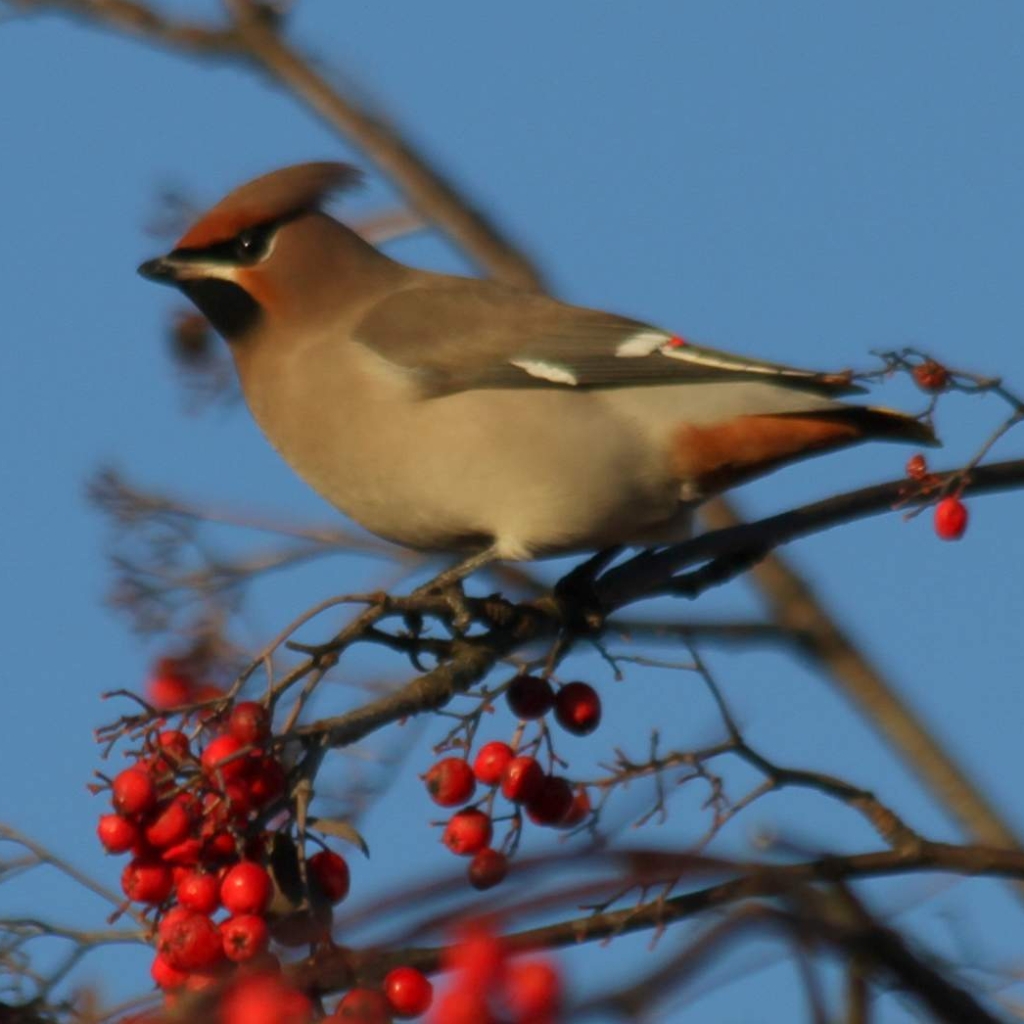This year we are taking our Winter Wildlife event online. Join us for the live launch on our YouTube channel at 4.30pm on Tuesday 1 December or catch up here:
Get your questions ready for a LIVE Q&A with Rob Jaques from the British Trust for Ornithology, who’ll be talking about birds and other winter wildlife, and ways you can get involved collecting important data from your own back garden. Discover some amazing winter animals, and go on a virtual tour of the wildlife of the Cambridge University Botanic Garden. Then sing along with our all new version of the festive favourite The 12 Days of Critters, written by PhD student Kate Howlett.
Check out the blog every day from December 1 – December 12 for posts filled with animal facts, top tips, films and sustainable craft activities celebrating wonderful winter wildlife:
Day 1: Live Launch and Top Tips for Winter Wildlife

Visit this post to get started on your winter wildlife journey by downloading our Winter Wildlife spotter sheet and getting your questions to our wildlife expert during our LIVE Q&A on YouTube. Read top winter wildlife tips from staff and students at the Museum, and make your own pop-up hedgehog in a leaf pile.
(image credit: John Howlett)
Day 2: Garden Birds

Winter is a great time to get into watching the birds in your garden or local green space. Visit today’s post and learn about garden birds with Dr Tony Fulford. Find out how to support the birds in your garden with top tips from Dr Andrew Bladon and find instructions on how to make seed cakes to feed them over winter from Lucy Williamson.
(image credit: John Howlett)
Day 3: Active Insects

Despite the cold, there are insects that stay active over winter. Visit today’s post to see the moths that fly at different times of year, and find out about winter moths with Research Assistant Matt Hayes. Learn about moth trapping with Annette Shelford and find instructions on how to create a winter gift from recycled fabrics inspired by these wonderful animals.
(image credit: Keith Simmons CC BY-NC-SA 2.0)
Day 4: Life Underground

What to do with the vegetable peelings from your winter meals? Create a compost heap! Visit the blog today and find out more about compost creatures with Dr Ed Turner, and read his top tips on supporting these important animals.
(image credit: Max Westby CC BY-NC-SA 2.0)
Day 5: Hibernation

We all know that hedgehogs hibernate, but did you know that there are insects that huddle away over winter? Visit the blog today and discover hibernating animals from mammals to ladybirds, and make an insect refuge to support winter wildlife.
(image credit: Tom Austin CC BY-NC-SA 2.0)
Day 6: Winter Mammals

Not all mammals hibernate through the colder months of the year. In winter you might see (and hear) foxes both in towns and in the countryside. Visit the blog today and find out more about winter mammals with Learning Officer Dr Roz Wade, and see if your memory is as good as a squirrel’s by making our memory game.
Day 7: Winter Visitors

For some animals, our winters represent a mild break from much colders conditions further north, and they visit our shores for access to food over the winter months. Today’s post explores some of these winter visitors with Dr Tony Fulford, and these birds also inspire our top tips for sustainable sweet gifts to make for friends and family.
Day 8: Healthy Habitats

From the tallest trees to the tiniest insects, nothing in our natural world lives in isolation. In this post we will be going on a virtual tour of the Botanic Garden, exploring some of the unsung heroes of healthy habitats, and giving top tips on choosing comfort foods that are comforting to the environment.
(image credit: Rosalyn Wade)
Day 9: Winter Water

Go to your local lake or river and you can see some wonderful water birds, from swans and ducks to herons and more. Visit the blog today and see some of the birds living on the Cam with our Winter Water film, find out more about waterfowl with Dr Tony Fulford, and discover the wildlife you can support by providing water for wildlife in your own green spaces.
(image credit: John Howlett)
Day 10: Traces of Winter Wildlife

There are some animals that you might not see in winter, but they can leave evidence behind that they have been there. Visit this blog post today and learn how to make a wildlife film on a budget with Ellie Bladon, find out about animal footprints and poo, look inside owl pellets with Ian Harvey, and create your own sustainable footprint wrapping paper with Learning Assistant Sara Steele.
(image credit: Antony Oliver CC BY-SA 2.0)
Day 11: Surprising Winter Animals

Did you know that there are animals called snow fleas that hop over the surface of snow? Visit this blog post today and find out more about these and other surprising winter animals from the staff and students of the Museum, and upcycle a t-shirt into a snowflake decoration for presents or your home.
(image credit: Scott Robinson CC BY 2.0)
Day 12: 12 Days of Critters

This online festival has been all about the 12 Days of Critters – the rewriting of the festive favourite by PhD student Kate Howlett. Visit the blog today to sing along and find out more about the animals it features, and make a paper starling murmuration inspired by the final flock in the song.
(image credit: Tanya Hart CC BY-SA 2.0)


2 thoughts on “Coming Soon: 12 Days of Winter Wildlife”